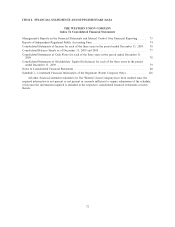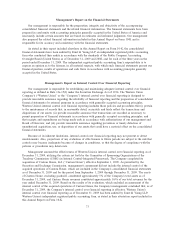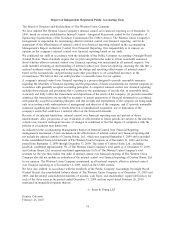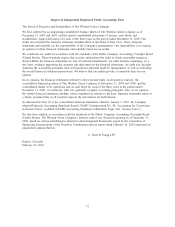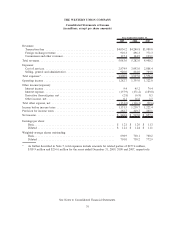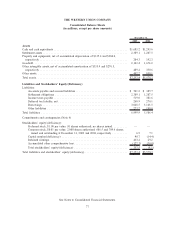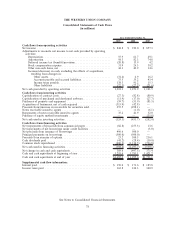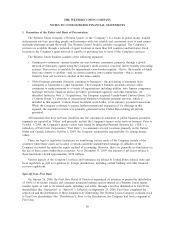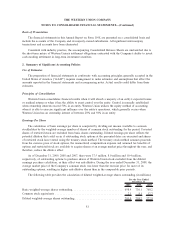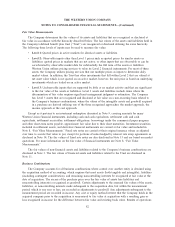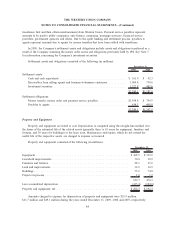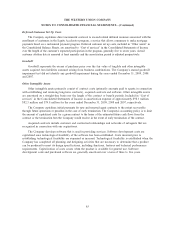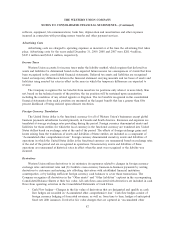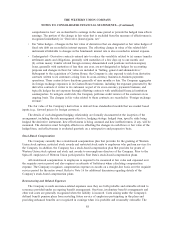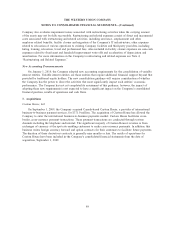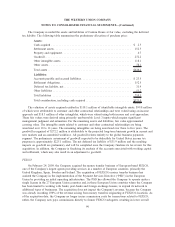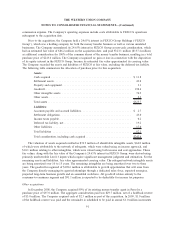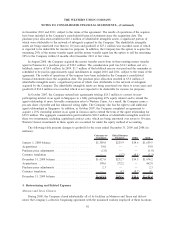Western Union 2009 Annual Report Download - page 96
Download and view the complete annual report
Please find page 96 of the 2009 Western Union annual report below. You can navigate through the pages in the report by either clicking on the pages listed below, or by using the keyword search tool below to find specific information within the annual report.Fair Value Measurements
The Company determines the fair values of its assets and liabilities that are recognized or disclosed at
fair value in accordance with the hierarchy described below. The fair values of the assets and liabilities held in
the Company’s defined benefit plan trust (“Trust”) are recognized or disclosed utilizing the same hierarchy.
The following three levels of inputs may be used to measure fair value:
•Level 1: Quoted prices in active markets for identical assets or liabilities.
•Level 2: Observable inputs other than Level 1 prices such as quoted prices for similar assets or
liabilities; quoted prices in markets that are not active; or other inputs that are observable or can be
corroborated by observable market data for substantially the full term of the assets or liabilities.
Western Union utilizes pricing services to value its Level 2 financial instruments. For most of these
assets, the Company utilizes pricing services that use multiple prices as inputs to determine daily
market values. In addition, the Trust has other investments that fall within Level 2 that are valued at
net asset value which is not quoted on an active market, however, the unit price is based on underlying
investments which are traded on an active market.
•Level 3: Unobservable inputs that are supported by little or no market activity and that are significant
to the fair value of the assets or liabilities. Level 3 assets and liabilities include items where the
determination of fair value requires significant management judgment or estimation. The Company
has Level 3 assets that are recognized and disclosed at fair value on a non-recurring basis related to
the Company’s business combinations, where the values of the intangible assets and goodwill acquired
in a purchase are derived utilizing one of the three recognized approaches: the market approach, the
income approach or the cost approach.
Except as it pertains to an investment redemption discussed in Note 9, carrying amounts for many
Western Union financial instruments, including cash and cash equivalents, settlement cash and cash
equivalents, settlement receivables, settlement obligations, borrowings under the commercial paper program
and other short-term notes payable, approximate fair value due to their short maturities. Investment securities,
included in settlement assets, and derivative financial instruments are carried at fair value and included in
Note 8, “Fair Value Measurements.” Fixed rate notes are carried at their original issuance values as adjusted
over time to accrete that value to par, except for portions of notes hedged by interest rate swap agreements as
disclosed in Note 14. The fair values of fixed rate notes are also disclosed in Note 15 and are based on market
quotations. For more information on the fair value of financial instruments see Note 8, “Fair Value
Measurements.”
The fair values of non-financial assets and liabilities related to the Company’s business combinations are
disclosed in Note 3. The fair values of financial assets and liabilities related to the Trust are disclosed in
Note 11.
Business Combinations
The Company accounts for all business combinations where control over another entity is obtained using
the acquisition method of accounting, which requires that most assets (both tangible and intangible), liabilities
(including contingent consideration), and remaining noncontrolling interests be recognized at fair value at the
date of acquisition. The excess of the purchase price over the fair value of assets less liabilities and
noncontrolling interests is recognized as goodwill. Certain adjustments to the assessed fair values of the assets,
liabilities, or noncontrolling interests made subsequent to the acquisition date, but within the measurement
period, which is one year or less, are recorded as adjustments to goodwill. Any adjustments subsequent to the
measurement period are recorded in income. Any cost or equity method interest that the Company holds in the
acquired company prior to the acquisition is remeasured to fair value at acquisition with a resulting gain or
loss recognized in income for the difference between fair value and existing book value. Results of operations
82
THE WESTERN UNION COMPANY
NOTES TO CONSOLIDATED FINANCIAL STATEMENTS—(Continued)


